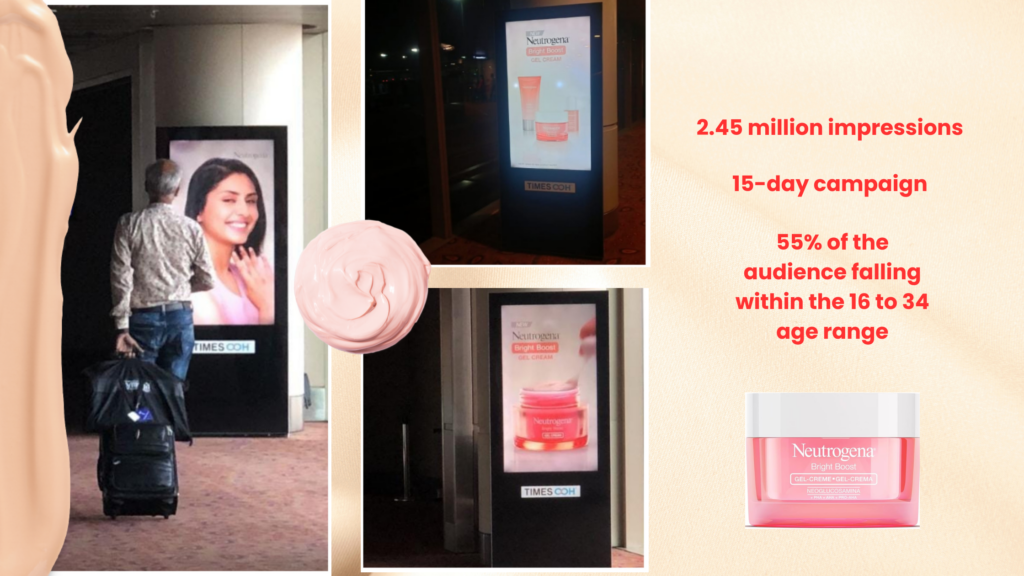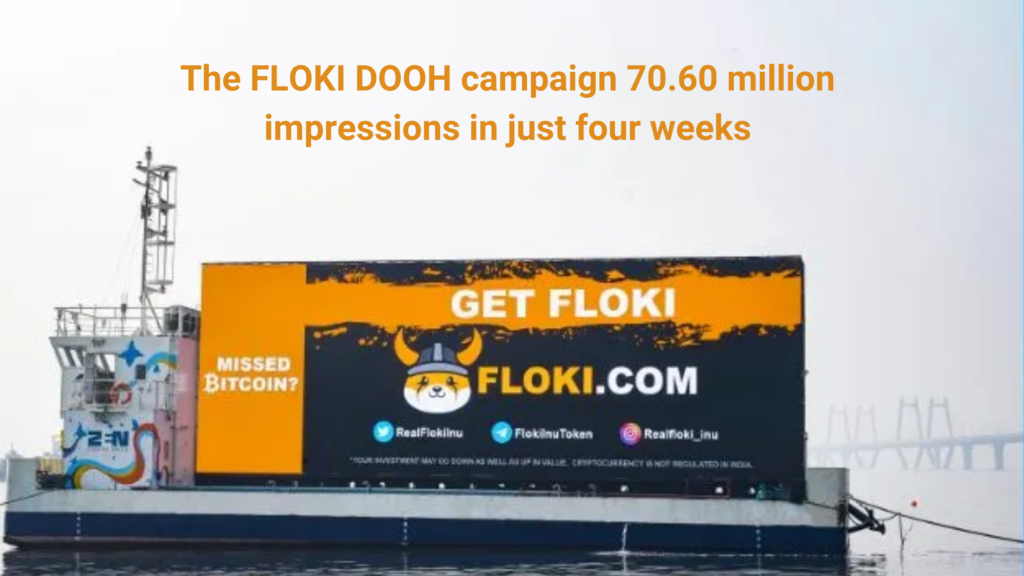June 11, 2024
Hyperlocal Marketing: The Key to Unlocking the Full Potential of OOH Advertising in India
Out-of-home (OOH) advertising in Delhi, Mumbai, Bangalore, Chennai and other cities in India has long been a cornerstone of marketing strategies for agencies and brands, offering unparalleled reach and visibility to brands seeking to connect with consumers on the move.
However, measuring the effectiveness of OOH campaigns regardless of the city has historically been challenging due to the medium’s transient nature. In today’s digital age, technological advancements and data analytics have changed how advertisers track and optimize their OOH campaigns for maximum impact.
Considering these challenges, Moving Walls, a global outdoor advertising enterprise software provider has revolutionised the OOH industry with innovative technology. Moving Walls’ patented platforms, such as the Moving Audiences Platform, utilise real-time monitoring, data-driven insights, and precise audience targeting to enhance the value and impact of all OOH media formats.
Understanding OOH Measurement Metrics
Traditional metrics such as impressions and reach provide valuable insights into the number of people exposed to OOH advertisements. By analysing foot traffic data and demographic information, advertisers can gauge the effectiveness of their campaigns in reaching target audiences. For example, Neutrogena, a premium skincare brand in India wanted to effectively announce the launch of its Bright Boost range and overcome the challenges of capturing market attention in a saturated landscape like Mumbai. Neutrogena teamed up with Moving Walls to execute a hyperlocal DOOH campaign to create a splash about its latest product launch.
Neutrogena strategically utilized the Digital Out-of-Home (DOOH) screens in T2 Prime Passage at Mumbai Airport to amplify the launch of its new product. Leveraging the power of DV360, the brand activated a programmatic campaign across 38 physical screens strategically placed in high-dwell areas of the airport, ensuring maximum exposure to the target audience. Moving Audiences played a crucial role in planning the campaign by providing valuable insights on forecasted Reach, Potential Views, and Impressions data. This data not only guided the planning process but also served as a benchmark to measure the campaign’s actual performance and effectiveness.

The campaign successfully generated 2.45 million impressions within 15 days, effectively reaching a substantial portion of the target audience. Notably, the afternoon time belt proved to be particularly effective in capturing the audience’s attention, accounting for nearly one-third of the total engagement. Additionally, the campaign resonated strongly with young adults, with 55% of the audience falling within the 16 to 34 age range. The campaign delivered 105% more reach than what was initially planned.
Hyperlocal marketing strategies are particularly effective in cities like Chennai, Bangalore, and Mumbai. Advertisers can leverage billboards, bus shelters, and other outdoor advertising mediums to connect with local audiences. For instance, a campaign promoting a new restaurant in Chennai might target high-traffic areas like Marina Beach or the Chennai Central Railway Station.
Learn how Outdoor Advertising in India reaches diverse audiences across bustling cities and local hubs.
Harnessing Data Analytics for Optimization
Data-driven Insights: Leveraging data analytics tools, advertisers can analyse campaign performance and identify trends and patterns that inform optimization strategies. By monitoring key performance indicators (KPIs) such as ad recall and brand recognition, advertisers can make data-driven decisions to enhance campaign effectiveness. For instance, a campaign promoting a new restaurant in a trendy neighbourhood might track ad recall and brand recognition to gauge the effectiveness of its marketing efforts.
Dynamic Content Optimization: With dynamic content management systems, advertisers can tailor OOH advertisements based on real-time data inputs such as weather conditions, time of day, and audience demographics. This dynamic approach ensures that ads remain relevant and engaging, driving higher levels of consumer response and brand recall. For example, a campaign promoting a summer sale at a beachside store might adjust its messaging based on weather forecasts to maximize relevance.
An example of this type of campaign is the DOOH campaign for Floki Inu (FLOKI), a dog-themed crypto coin which wanted to create a splash in several Indian cities. Floki needed to be present and visible where audiences were spending the most time – Outside Their Homes. As its coin got listed on the Top Indian Exchange, Floki wanted to almost immediately execute a campaign to attract new buyers. With a very short lead time, Floki wanted to remotely launch their campaign only on the most relevant OOH media assets in Mumbai, Delhi, Bangalore, Kerala, Karnataka, Maharashtra, Gujarat, Telangana, West Bengal, and Hyderabad while choosing the best time belts for each audience segment.

Some of the billboards chosen in these locations were premium airport screens in Mumbai, Times Mumbai Metro, pedestrians, restobars, gantries and moving billboards (at sea). The campaign was able to build a data-driven plan that maximized impressions – overall it reached 70.60 million impressions in just four weeks!
The campaign also proved to reach relevant audiences as frequent travellers and working professionals contributed to more than 60% of the overall audience that was exposed to the campaign.
In conclusion, tracking and optimizing OOH campaigns is essential for maximizing ROI(return on investment) and achieving campaign objectives. By leveraging data analytics and real-time insights, advertisers can gain a deeper understanding of consumer behaviour and fine-tune their campaigns for optimal impact. As technology continues to evolve, the future of OOH advertising promises even greater opportunities for innovation and effectiveness in engaging audiences in the physical world.
By integrating data analytics and dynamic content optimization, advertisers can create targeted and engaging OOH campaigns that drive meaningful results. Whether the goal is to increase brand awareness, drive foot traffic, or generate leads, OOH advertising offers a powerful platform for connecting with consumers in the real world. By tracking results and optimizing OOH campaigns, advertisers can ensure that their OOH efforts are aligned with their marketing objectives and maximize their return on investment.
Whether you are a brand or agency in India, talk to our team of OOH experts today on how you can utilize data to optimize your campaigns.
Scale up your OOH Ads with better ROAS today.